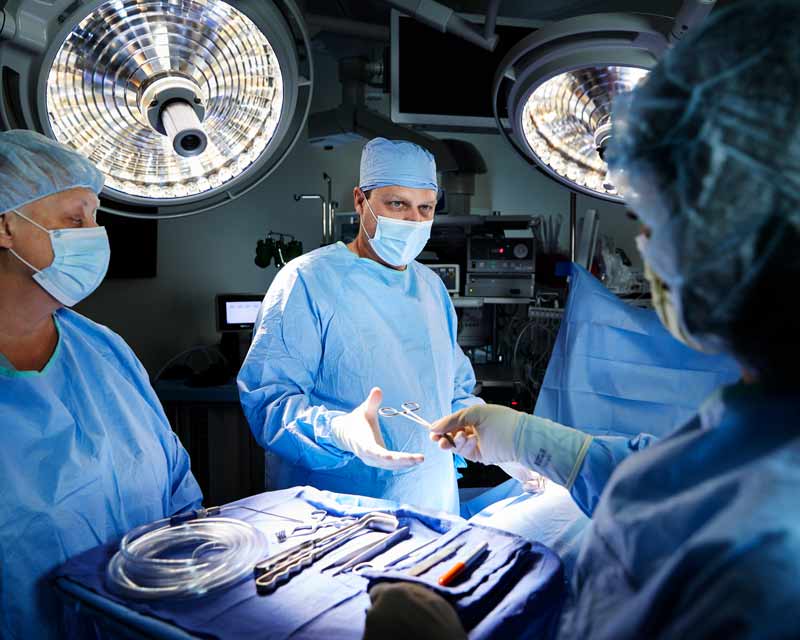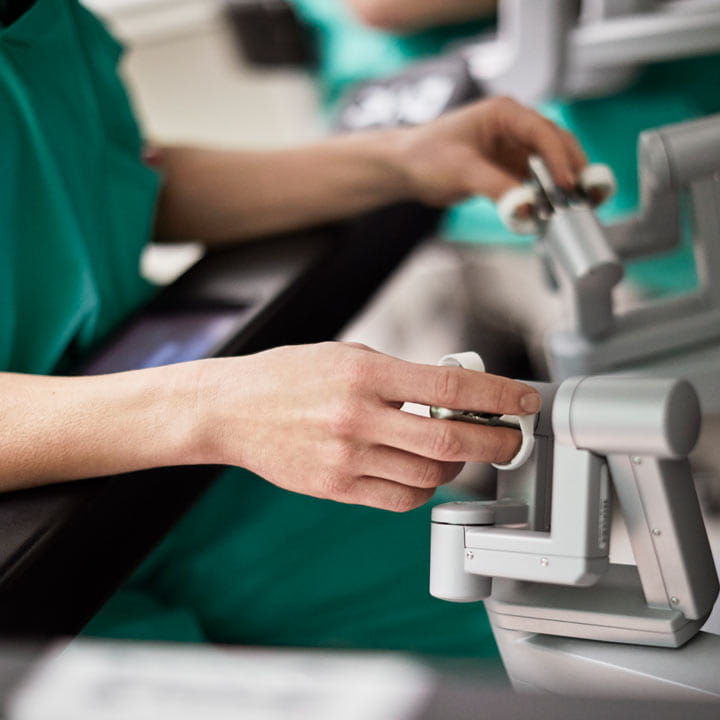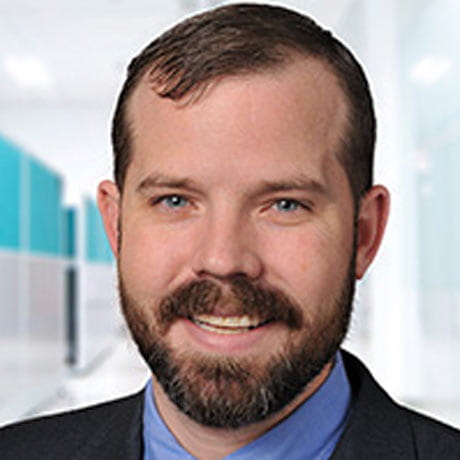
Comprehensive Esophageal Health Center opens with more convenient, streamlined care
 The Division of General and Gastrointestinal Surgery marked a major milestone on Nov. 5, 2022, when Michael Meara, MD, clinical associate professor of Surgery in The Ohio State University College of Medicine, performed his 1,000th robotic operation. The landmark case, one of more than 3,000 robotic procedures completed by the division, occurred nearly seven years to the day from the current group’s first robotic surgery.
The Division of General and Gastrointestinal Surgery marked a major milestone on Nov. 5, 2022, when Michael Meara, MD, clinical associate professor of Surgery in The Ohio State University College of Medicine, performed his 1,000th robotic operation. The landmark case, one of more than 3,000 robotic procedures completed by the division, occurred nearly seven years to the day from the current group’s first robotic surgery.
For Dr. Meara, the achievement was especially satisfying. In 2015, he recognized the success surgeons elsewhere were having using robotic surgery to complete complex abdominal wall reconstruction procedures and knew that he wanted to bring those capabilities to The Ohio State University Wexner Medical Center. At the time, there was no robotic surgery presence in general surgery.
“That’s really what motivated me to embrace robotics,” Dr. Meara says. “I wanted to make sure we were offering that high level of care to our patients and the best education to our residents and fellows.”
The Ohio State Wexner Medical Center is a national leader in minimally invasive surgery using robotic technology. Our Center for Advanced Robotic Surgery includes some of the most experienced surgical nurses and technicians in the country, along with more than 60 surgeons skilled in robotics. Seven of these physicians are part of the General and Gastrointestinal Surgery team.
According to Dr. Meara, his team uses robotic procedures to treat a variety of conditions. The most common surgeries they perform include cholecystectomies, Nissen fundoplication and anti-reflux procedures, along with many hernia repair procedures. Some of these surgeries are so challenging that a minimally invasive approach wouldn’t be possible without robotics.
“I find that I’m able to push the level of complexity with these surgeries,” Dr. Meara says, “and I think that imparts a patient benefit.”
The Ohio State Wexner Medical Center currently has seven da Vinci® Surgical Systems at University Hospital and two at Ohio State East Hospital, where Dr. Meara concentrates much of his practice. Additional systems are likely to be added.
 So what does it take to reach 1,000 robotic surgeries in the relatively short time that Dr. Meara accomplished it?
So what does it take to reach 1,000 robotic surgeries in the relatively short time that Dr. Meara accomplished it?
“A lot of it has to do with a shared vision and support,” Dr. Meara says, referring to his colleagues as well as to executive management.
Timothy Pawlik, MD, PhD, MPH, chair of the Department of Surgery, and Benjamin Poulose, MD, director of the Division of General and Gastrointestinal Surgery, have been exceptionally helpful and tremendous advocates for his team, according to Dr. Meara.
“We’ve been really fortunate from a leadership standpoint,” he says.
Also worthy of recognition for their leadership are Elizabeth Seely, MHA, FACHE, chief administrative officer of the Hospital Division of the Ohio State Health System, and Mary Howard, DNP, RN, executive director of East Hospital. They’ve been instrumental in expanding robotic surgery access and offerings. Of particular significance are their efforts to bring robotic procedures to East Hospital, which cares for an underserved population.
“I think that’s of paramount importance,” Dr. Meara says.
Beyond the efforts of the hospital leadership team is the work and dedication of the surgeons themselves. They’ve worked together to bring this high-level care to their patients and supported each other in growing the skills and experience necessary for robotic surgery success.
Part of what makes the 1,000 robotic surgeries noteworthy is the educational nature of the Ohio State Wexner Medical Center.
“For an academic institution, the volume is significant,” Dr. Meara says.
Teaching residents on these surgeries takes time, which limits the number of procedures surgeons can perform. But bringing more new physicians into the robotic surgery arena is a good thing. Since the launch of the general and gastrointestinal robotic surgery program, 32 residents have graduated with robotic certification. That’s strengthened the reputation of the robotics program nationally.
Teaching opportunities in advanced robotic surgery and the general and gastrointestinal robotic surgery offerings also have helped the Ohio State Wexner Medical Center be ranked among the nation’s top 10 surgical residency programs by Doximity’s 2022-2023 Residency Navigator. All of this makes the program a drawing card for new residents.
“The general and gastrointestinal robotic surgery program is absolutely a recruitment tool,” Dr. Meara says.
It’s proving to be an important educational research tool, too. University faculty have published upwards of 10 journal articles pertaining to the teaching outcomes of residents and fellows in the program.
Expanding access, both to increase surgical volume and to offer emergency and acute care surgical services, is likely the future of robotics at the Ohio State Wexner Medical Center, Dr. Meara says. And the medical center will continue to focus its research efforts on teaching and patient outcomes.
Vision and passion to bring additional benefits to patients are what make starting and growing programs like this possible, according to Dr. Meara. The passion, he says, is especially important. With passion, anything is possible.